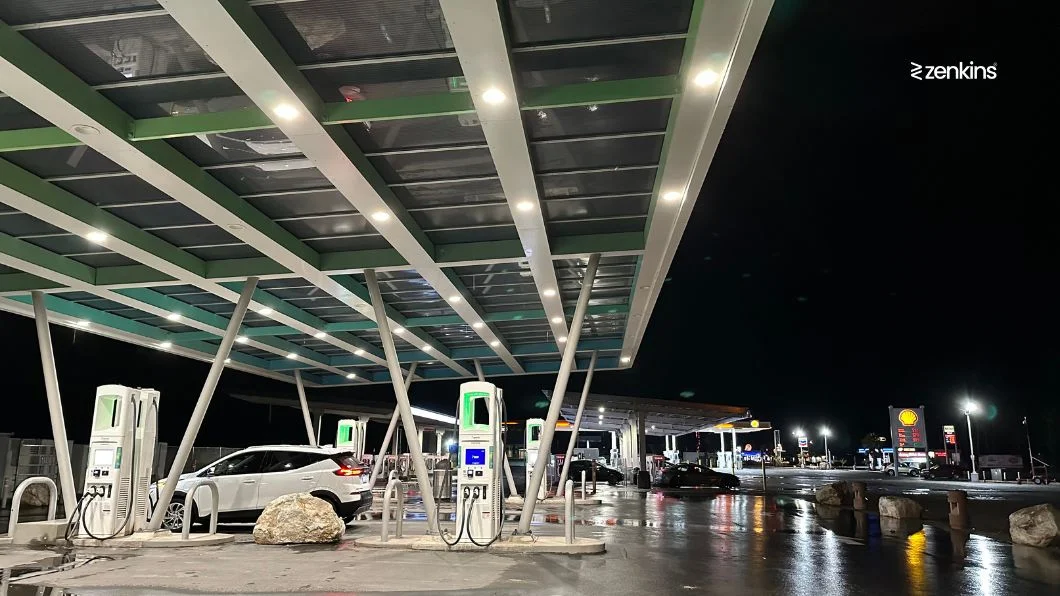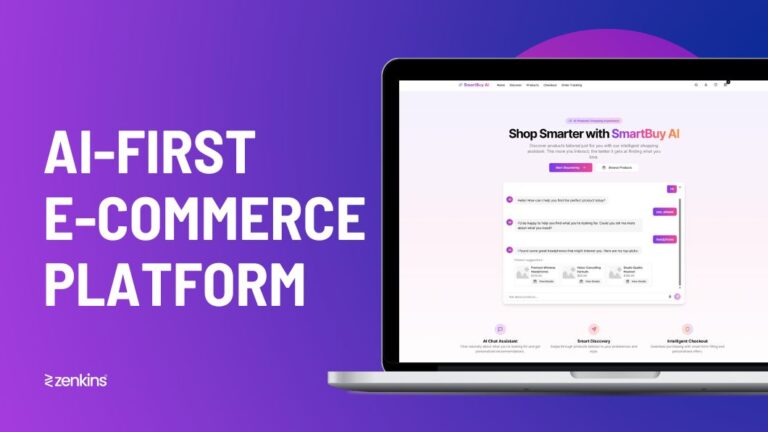Table of Contents
Case Study: EV Charging Infrastructure Software for Seamless Electric Mobility
Introduction
As the world accelerates toward greener energy solutions, electric vehicles (EVs) have become central to this movement. However, the backbone of electric mobility is an efficient and reliable EV charging infrastructure software. Zenkins, a leading software development company, was tasked with developing a sophisticated EV Charging Infrastructure Software leveraging the Microsoft technology stack. This case study delves into the journey, challenges, and solutions provided by Zenkins to revolutionize the EV charging ecosystem.
Industry Overview: The Importance of EV Charging Infrastructure
The electric vehicle industry has witnessed exponential growth in recent years, with global sales of EVs increasing by nearly 40% in 2023. A significant aspect of this growth is the availability of charging infrastructure to support the expanding EV fleet. The industry faces a pivotal challenge: how to scale charging infrastructure while ensuring seamless interoperability, high availability, and robust security.
Project Scope: The Need for Robust EV Charging Infrastructure Software
The client, a leading electric vehicle manufacturer, recognized that a scalable, secure, and highly efficient EV Charging Infrastructure Software was essential to ensure the seamless operation of its nationwide EV charging network. The software had to support a range of charging stations and accommodate future technologies, such as fast charging and wireless charging.
The project objectives included:
- Centralized management of charging stations across various locations.
- Real-time monitoring and analytics to optimize operations.
- Seamless integration with mobile applications for end-users.
- Support for multiple payment gateways and subscription-based services.
- Enhanced security features to prevent unauthorized access.
- Easy scalability to accommodate future growth in EV adoption.
Challenges in Developing EV Charging Infrastructure Software
Building software for a nationwide EV charging infrastructure presented numerous challenges, which Zenkins tackled using an agile methodology and the powerful capabilities of the Microsoft technology stack. The major challenges were:
- Interoperability: The software needed to integrate seamlessly with various charging station models and comply with international standards like Open Charge Point Protocol (OCPP) and IEC standards.
- Scalability: As EV adoption is growing exponentially, the software needed to scale effortlessly, accommodating the expected surge in charging stations and user demand.
- Real-Time Data Processing: Monitoring thousands of charging points in real-time was a critical requirement to ensure minimal downtime and optimized energy distribution.
- Security: Given the rise in cybersecurity threats, securing the entire network, including data exchanges between chargers, cloud infrastructure, and mobile apps, was paramount.
- User Experience: Delivering a smooth and intuitive experience for both operators and users was crucial, requiring a user-friendly interface for administrators and real-time updates for EV drivers.
Zenkins’ Solution: Building EV Charging Infrastructure Software with the Microsoft Technology Stack
To meet the client’s requirements, Zenkins deployed an integrated, future-proof solution using the Microsoft technology stack. The following technologies were employed:
- Azure Cloud Services: Zenkins utilized Azure for cloud-based data storage and management, ensuring scalability and high availability of the infrastructure. Azure also provided real-time data analytics and monitoring, allowing for proactive maintenance and optimization.
- Azure IoT Hub: By integrating the Azure IoT Hub, Zenkins enabled seamless communication between the various charging stations and the central management system. The IoT Hub allowed for real-time data exchange, crucial for monitoring the health and status of each charging station.
- .NET Core: The core application was developed using .NET Core, which provided a robust, scalable, and flexible framework to build microservices for the platform. .NET Core’s cross-platform capabilities ensured that the software could run on different operating systems.
- Power BI for Data Analytics: Real-time data from the charging stations was visualized using Power BI, offering actionable insights into the operation and performance of the infrastructure. This helped optimize energy usage, manage peak loads, and identify underperforming stations.
- Azure Active Directory: To ensure the highest level of security, Azure Active Directory (AD) was used to manage user identities and permissions. This allowed for role-based access control, ensuring that only authorized personnel could make changes to the system.
- Azure DevOps: For continuous integration and continuous delivery (CI/CD), Zenkins used Azure DevOps. This enabled the rapid deployment of updates and new features, ensuring the software stayed up-to-date with evolving requirements.
- SQL Server: SQL Server on Azure was utilized for storing transaction records, user information, and charging data. Its high performance and security features made it an ideal choice for handling large volumes of data efficiently.
- Mobile App Integration: Zenkins also developed a mobile app, using Xamarin, to allow users to locate charging stations, monitor charging status, and make payments easily. This app was integrated with the central system to offer real-time updates to EV owners.
Key Features of the EV Charging Infrastructure Software
Zenkins developed a feature-rich software solution that catered to all the client’s needs. The key features of the EV Charging Infrastructure Software included:
- Centralized Dashboard: A user-friendly admin dashboard that allowed operators to monitor all charging stations in real-time, including their status, energy consumption, and performance metrics.
- Dynamic Load Management: The software included a dynamic load management system to ensure that the energy distribution across charging stations was optimized, preventing overloads and reducing operational costs.
- Real-Time Notifications: Operators and users received real-time notifications for issues such as charger faults, availability updates, and payment confirmations.
- Payment Integration: Zenkins integrated multiple payment gateways, allowing users to pay for charging sessions through credit/debit cards, mobile wallets, or subscription services.
- Predictive Maintenance: Leveraging data analytics and machine learning models, the software could predict potential issues with chargers, allowing for proactive maintenance and reducing downtime.
- User Authentication and Security: The software included robust security features like multi-factor authentication (MFA), encrypted communication channels, and role-based access control.
- Interoperability with OCPP: The software was fully compliant with the Open Charge Point Protocol (OCPP), ensuring seamless communication with a wide range of charging station hardware.
How Zenkins Overcame Key Challenges
- Scalability Through Azure Cloud: By leveraging the scalable cloud infrastructure provided by Microsoft Azure, Zenkins ensured that the system could handle a growing number of charging stations without any performance bottlenecks.
- Interoperability Using OCPP: The system’s integration with the OCPP standard enabled seamless communication between various hardware models, ensuring that the software could support charging stations from multiple vendors.
- Security Measures with Azure AD: Zenkins implemented advanced security protocols using Azure AD and other encryption technologies to safeguard the system against unauthorized access and cyber threats.
- Real-Time Monitoring with Azure IoT Hub: The Azure IoT Hub facilitated real-time monitoring of the charging stations, allowing for immediate detection of issues and enabling the operators to respond swiftly.
- Enhanced User Experience: The combination of a responsive web-based admin portal and a user-friendly mobile app ensured that both operators and EV users had an intuitive and efficient experience.
Results and Benefits
Upon deployment, the EV Charging Infrastructure Software delivered several tangible benefits:
- Operational Efficiency: The centralized management dashboard allowed operators to monitor and control multiple charging stations with ease, resulting in reduced operational costs and improved system uptime.
- Reduced Downtime: With real-time monitoring and predictive maintenance features, downtime was significantly reduced. Any issues with the charging stations were identified and resolved before they could affect users.
- Increased User Satisfaction: The seamless user experience, coupled with real-time notifications and multiple payment options, enhanced user satisfaction. The mobile app provided drivers with critical information, such as station availability and estimated charging time.
- Scalable Solution: The cloud-based infrastructure ensured that the system could easily scale to accommodate the client’s growing network of charging stations.
- Enhanced Security: The use of Azure Active Directory and other advanced security measures ensured that the system remained secure and compliant with data privacy regulations.
Future Outlook
Zenkins continues to work with the client, enhancing the EV Charging Infrastructure Software with new features to support future trends in the EV industry, such as wireless charging and vehicle-to-grid (V2G) integration. As EV adoption grows globally, the software’s scalable architecture ensures that the system can meet the demands of the future, making it a long-term asset for the client.
Conclusion
Through the development of an innovative EV Charging Infrastructure Software using the Microsoft technology stack, Zenkins has played a critical role in supporting the EV industry’s growth. The software solution not only addresses today’s challenges but also provides a future-proof platform for the rapidly evolving electric vehicle ecosystem. By delivering a scalable, secure, and user-centric solution, Zenkins has solidified its position as a trusted technology partner in the realm of sustainable mobility.




